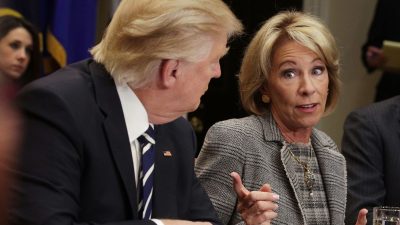Trump Regime v. Affirmative Action

The term affirmative action was first included in the 1935 National Labor Relations Act – landmark New Deal legislation, letting organized labor bargain with management on a level playing field more than ever before.
It was the high water mark of labor/management relations, letting workers unionize, protecting them from discrimination on the job, Blacks and Latinos not protected by union bosses.
Legislative benefits gained were short-lived. Union bosses collude with management for their own self-interest. Workers are largely powerless, unsupported by Republicans, undemocratic Dems, and their leadership.
Nearly straightaway in office (March 1961), Jack Kennedy issued Executive Order 10925.
It required government contractors to “consider and recommend additional affirmative steps which should be taken by executive departments and agencies to realize more fully the national policy of nondiscrimination.”
“The contractor will take affirmative action to ensure that applicants are employed, and that employees are treated during employment, without regard to their race, creed, color, or national origin.”
The EO established the President’s Committee on Equal Employment Opportunity (PCEEO).
Government contractors failing to comply with the EO risked loss of government business. Kennedy’s order didn’t require preferential treatment for minorities.
It “advocat(ed) racially neutral hiring to end job discrimination.” In December 1961, a separate Commission on the Status of Women was established – charged with “examining employment policies and practices of the government and of contractors” with regard to gender.
In June 1963, Kennedy’s EO 11114 declared it was the “policy of the United States to encourage by affirmative action the elimination of discrimination in employment.”
The landmark 1954 Supreme Court Brown v. Board of Education held that “separate educational facilities (are) inherently unequal” and unconstitutional.
The 1964 Civil Rights Act prohibited discrimination against students and college applicants on the basis of race or gender.
Affirmative action policies adopted by many US colleges and universities give special consideration to racial minorities, women, and other discriminated against groups.
In Regents of the University of California v. Bakke (1978), the Supreme Court upheld affirmative action, ruling race to be a legitimate college admissions policy – excluding racial quotas it called unlawful.
In Grutter v. Bollinger (2003), the Supreme Court upheld the University of Michigan’s Law School affirmative action admissions policy.
In Fisher v. University of Texas (2016), the High Court preserved the constitutionality of race-based admissions.
Writing for the majority, Justice Kennedy highlighted the importance of “student body diversity,” calling it “central to its identity and educational mission.”
Despite the above High Court rulings, at least 10 states limit or banned affirmative action as a factor in college or university admissions.
On July 3, the Trump regime ordered the practice abandoned, a joint Education and Justice Department letter, banning “advocate policy preferences and positions beyond the requirements of the Constitution.”
The White House turned truth on its head, claiming affirmative action practices for college and university admissions creates discrimination.
Some background to Tuesday’s action. In August 2017, Trump’s Justice Department “challenge(d) (affirmative action practices) colleges and universities have undertaken to expand educational opportunity,” calling them “an affront to our values as a country.”
The DOJ began “investigating and suing universities over affirmative action admissions policies deemed to discriminate against white applicants.”
At the time, Leadership Conference on Civil and Human Rights head Vanita Gupta issued a statement, saying
“(l)ongstanding Supreme Court precedent has upheld the constitutionality and compelling state interest of (affirmative action) policies, and generations of Americans have benefited from richer, more inclusive institutions of higher education.”
Lawyers’ Committee for Civil Rights Under Law executive director Kristen Clarke said the Justice Department’s Civil Rights Division was “created and launched to deal with the unique problem of discrimination faced by our nation’s most oppressed minority groups.”
The US Commission on Civil Rights accused Trump’s Justice Department and Education Secretary Betsy DeVos with “repeated refusal” to enforce federal civil rights, calling their actions “particularly troubling.”
Republican and undemocratic Dem governance serves privileged interests in America exclusively.
Trump’s domestic and geopolitical agenda exceeds the extremism of his predecessors – on the wrong side of virtually everything important to ordinary Americans.
*
Stephen Lendman is a Research Associate of the CRG, Correspondent of Global Research based in Chicago.
VISIT MY NEW WEB SITE: stephenlendman.org (Home – Stephen Lendman). Contact at [email protected].
My newest book as editor and contributor is titled “Flashpoint in Ukraine: How the US Drive for Hegemony Risks WW III.”
http://www.claritypress.com/LendmanIII.html

